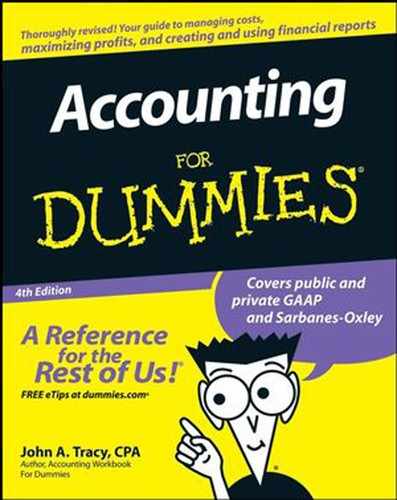9.3. Answering Two Critical Profit Questions
|
How did I make $1.5 million profit (operating earnings before interest and income tax) in 2009?
Why did my profit increase $215,650 over last year ($1,500,000 in 2009 - $1,284,350 in 2008 = $215,650 profit increase)?
9.3.1. How did you make profit?
Actually, you can answer this profit question three ways (see Figure 9-1 for data):
Answer # 1: You earned total margin that is more than fixed expenses.
You earned $25 profit margin per unit and sold 100,000 units; therefore:
$25 unit margin × 100,000 units sales volume = $2,500,000 margin
Your profit center is charged with $1 million total fixed expenses for the year ($750,000 direct plus $250,000 allocated fixed costs); therefore:
$2,500,000 margin - $1,000,000 fixed operating expenses = $1,500,000 operating profit
Answer # 2: Your sales volume exceeded your break-even point.
Your break-even point is the sales volume at which total margin exactly equals total fixed expenses. Your break-even point for 2009 was:
$1,000,000 total fixed expenses for year ÷ $25 margin per unit = 40,000 units sales volume break-even point
Your actual sales volume for the year was 100,000 units, or 60,000 units in excess of your break-even point. Each unit sold in excess of break-even generated $25 "pure" profit because the first 40,000 units sold covered your fixed expenses. Therefore:
60,000 units sold in excess of break-even × $25 margin per unit = $1,500,000 operating profit
Answer # 3: Your high sales volume diluted fixed expenses per unit to below your margin per unit.
The average fixed expenses per unit sold for the year is:
$1,500,000 total fixed expenses ÷ 100,000 units sold = $10 fixed expenses per unit sold
Your margin per unit was $25; so operating earnings per unit were $15 ($25 margin per unit – $10 fixed expenses per unit = $15 operating earnings per unit). Therefore:
$15 operating earnings per unit × 100,000 units sales volume = $1,500,000 operating earnings
Each answer is valid. In certain situations, one method of analysis is more useful than another. If you were thinking of making a large increase in fixed operating expenses, for example, you should pay attention to the effect on your break-even point; answer #2 is useful in this situation. If you were thinking of changing sales prices, answer #1, which focuses on margin per unit, is very relevant. (See the later section "Using the P&L Template for Decision-Making Analysis.") Likewise, if you're dealing with changes in product cost or variable operating expenses that affect unit margin, answer #1 is very helpful.
|
9.3.2. How did you increase profit?
In your profit center report (refer to Figure 9-1), note that your total fixed expenses increased from $925,000 last year to $1 million in 2009, a $75,000 increase. Of course, you should investigate the reasons for your fixed expense increases. The $25,000 increase in allocated fixed expenses may not be under your control, but the $50,000 increase in direct fixed expenses is under your control. These fixed costs are your responsibility as manager of the profit center. You definitely should know which of these costs were higher than last year, and the reasons for the increases.
In any case, you were able to increase margin more than enough to cover the fixed costs increases and to boost profit. In fact, your margin increased $290,650 over last year ($2,500,000 margin in 2009 – $2,209,350 margin in 2008 = $290,650 margin increase). How did you do this?
This question can be answered more than one way. In my view, the most practical method is to calculate the effect of changes in sales volume and the margin per unit. Being the superb manager that you are, to say nothing of your marketing genius, your profit center increased sales volume over last year. Furthermore, you were able to increase margin per unit, which is even more impressive. The profit impact of each change is determined as follows (refer to Figure 9-1 for data):
Sales volume change impact on profit:
$25 margin per unit × 2,500 units sales volume increase = $62,500 increase in margin
Margin per unit change impact on profit:
$2.34 increase in margin per unit × 97,500 units sales volume last year = $228,150 increase in margin
Even if your sales volume had stayed the same, the $2.34 increase in your margin per unit (from $22.66 to $25) would have increased margin $228,150. And by selling 2,500 more units than last year, you increased margin $62,500. Quite clearly, the major factor was the significant increase in your margin per unit. You were able to increase this key profit driver by more than 10 percent (10.3 percent to be precise). However, you may not be able to repeat this performance in the coming year; you may have to increase sales volume to boost profit next year.

